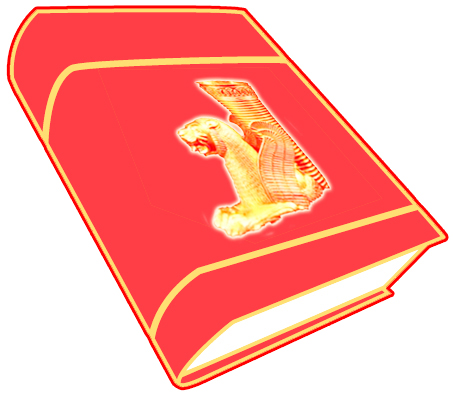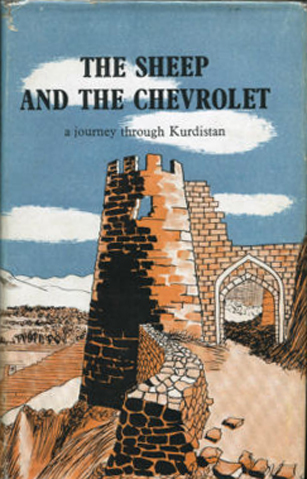
THE
SHEEP
& THE CHEVROLET
A JOURNEY through KURDISTAN - 1947

By:
FRANCOISE BALSAN
LONDON: First English Edition, 1947
Publisher/Year: LONDON,Paul Elek, First English Edition 1947.
[First French Etition, 1945].
Pages: 176
41 photo illustrations
Francois Balsan (1902-1972)
|
Frontispiece Elazik
For
thousands of years the Kurds have grazed their flocks in the
remote uplands - a region untouched by time, unvisited by all but
its own native nomads. This book deals very amusingly with the adventures
and misadventures of a Frenchman and his wife who set out a study sheep-breeding
there, and throws as many interesting sidelights.
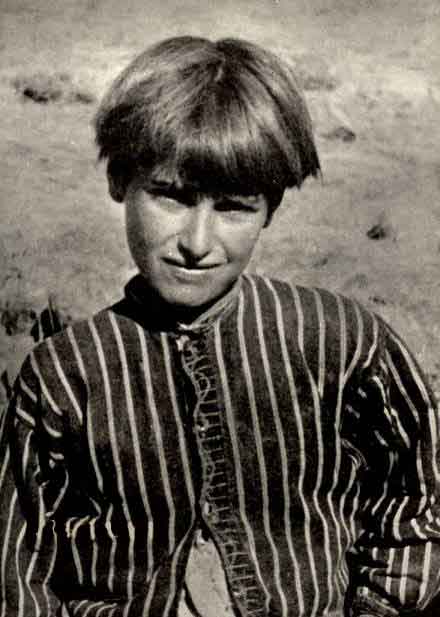
Kurdish boy - A handsome face
From Introduction ...
THE Kurds are very ancient people. Deeply rooted to their
ancestral soil, which lies astride three contemporary states - Turkey, Irak and Iran -
they have been there, so history tells us, for more than three
thousands years, close to what is probably the cradle of their race,
the Zagros Mountains. Small wonder that they have allways intrigued me.
The famous Hittities, in whom the modern ethnologists of
Ankara have discovered (*) a kinship with Turks, cannot boast of much
greater antiquity, for their ockupation of Asia Minor hardly goes back
beyond 1900 BC. Moreover, about a thousand years before our
times, such semblance of unity and civilisation as they had evolved
began to disintegrate; their dominion was therefore limited, whereas
the vigour
and stability of the Kurd are almost unique.
Their neighbours the Turks consented to marriages with immigrant
peoples, perhaps losing
thereby a little of the race's individuality; but in the sixteenth century they attained the
zenith of their power under the Khalifs with Soliman the Magnificent and then, after a long
decline,their present-day political zenith under the Republic. During all this time the Kurds
remained barbarians, clinging to their mountains, their sole interests were
for their flocks
of sheep or buffalo.
The Sultans, though they reigned in principle over the eastern mountains
and embodied them in those quaint-prettily-coloured maps with amusing
annotations, visited them as little as possible, and refrained from taking
any actions there.
This situation lasted from the sixteenth century until about
1840
when Constantinople decided to make sure of its hold on
Van, an important productive centre. This necessitated
a regular campaign against the Kurdish Emir, Bedir Khan Beg, who was qonquered
on the battlefield but nearly all of whose adherents took to the mountains.
The Armenian massacres of 1893, 1895 and 1896 (there were 200,000
Armenian
victims in 1895) were still living memory when those of 1909 broke out. Those of
1916 were organised butchary.
In the meanwhile, on the plateoux,on the plains of Anatolia,
the Kemalist
regime was steadily increasing in power. Ataturk defeated the Greeks and
showed his strength. The second Lausanne Conference therefore
did not
hesitate to hand over to him, in addition to Thrace, the politically inflamable
provinces of Kurdistan and Armenia which
had been emancipated three years
earlier - an unfortunate experience.
PART ONE: PREPARATION
1. The Lure Of Kurdistan
2. Objective : Sheep
3. Istanbul
4. Ankara
5. Our Guide
6. Across Anatolia By Train
7. Our Chauffeur Halil
PART TWO: THE APPROACH
8. The Murad Valley
9. In the Kurd Forest
10. Hospital at Bingol
11. Among The Nomads
12. Mush : Valley of Milk And Honey
13. The Varto Incident
14. The Lights Over The Lake
15. The Retreat Of The Ten Thousand
16. The South Shore Of Lake Van
17. Among The Armenians Ruins
18. The Sport Club
PART THREE: ARROUND VAN
19. The Governor
20. Old Van
21. The Eve Of Departure
22. Amongst The Eagles
23. The Sorcerer
24. Still Higher
25. At Bey Nafi's Camp
26. The Treasures Nebirnao
27. News From His Exellency
PART FOUR: TOWQARDS IRAN
28. On The Road To Iran
29. The Curious Supper At Baskale
30. Deir Or The Last Armenian Sanctuary
32. The Rattle Of Arms
_____________________
*): Turks are not belonging Eastern Greece (Anatolia) and Kurdistan.
They invaded Kurdistan and Eastern Greece (Anatolia) for about 900 years ago.
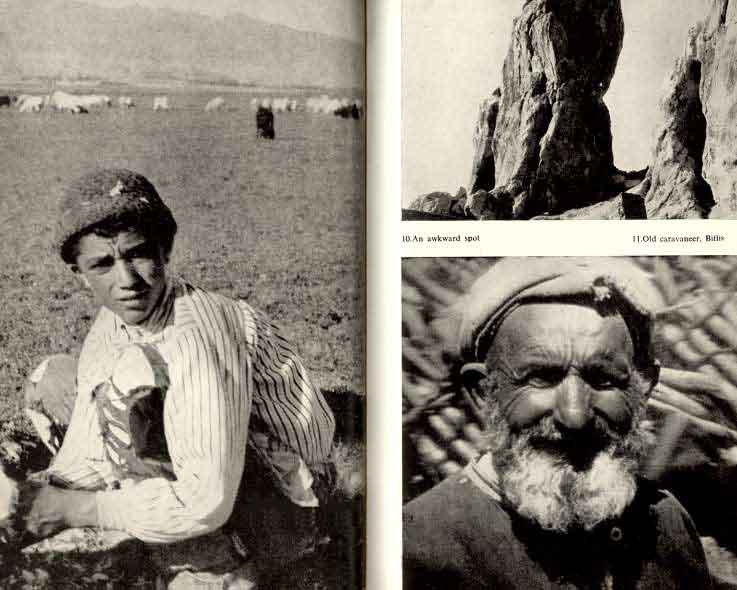
An awkward spot - Old caravaneer, Bitlis - Kurdish shearer - Palu region
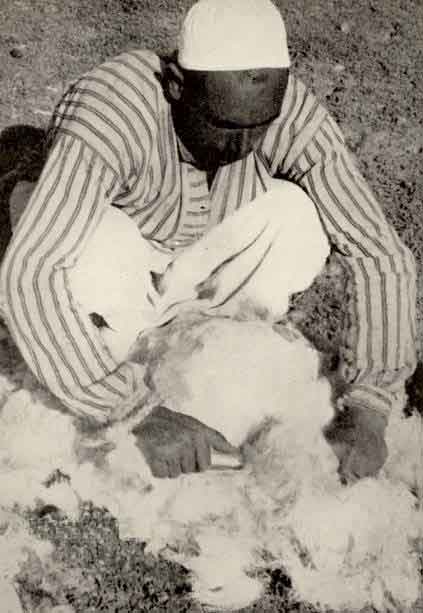
Kurdish
shearer - Palu region
Den bördiga halvmånens område har sedan gammalt varit berömt för sin textilindustri. Innan sidenet kom från Kina och bomullen från Indien, vävarna från detta område har haft ett ständigt behov av ull, och ull kom från de kurdiska fåren. I främre Asiens städer hade man också behov av det kurdiska fårköttet. Så spelade kurderna en viktig roll i Främre Asiens ekonomiska liv som dess djuruppfödare. Den rollen torde de tidigt ha kommit att spela. Det var kanske de som införde hästen hos assyrierna en gång. Och hästen uppföder de i viss mån fortfarande . Svenning, Carl-Elof, Politisk tidskrift, CUF, januari 1964, 'om de moderna kurdiska herdestammarna
Kürdler, elimizdeki ilmi verilere göre, yeryüzünün en eski üretken köylü halkıdır. Bu konuda batılı gezgin ve araştırmacıların oldukça çok gözlem ve incelemeri var: Örneğin Modern Kürd Göçer Aşiretleri ile ilgili 1964 yılında yaptığı bir araştırmasında isveçli araştırmacı yazar Carl Elof Svenning şöyle der: 'Bereketli Hilal coğrafyası geleneksel tekstil endüstrisi imalatında hep ünlü olmuştur. İpek Çin'den ve pamukta Hindistan'dan gelmeden önce, bu bölgenin dokumacılarının daimi bir yün ihtiyacı vardı ve bu yün 'kürd' koyunlarından gelirdi. Ön Asya şehirlerinde de 'kürd' koyun eti ihtiyacı vardı. Kürtlere Asya'nın çiftçileri ve hayvan ürünleri üreticisi olarak Asya'nın ekonomik hayatında önemli bir rol oynamışlardır - Bu rolü çok eski çağlardan beri oynamış olmaları lazım. Belki bir zamanlar asurlulara atı kürdler tanttı. Ve kürdler hala da belli ölçüde at beslerler' (Svenning, Carl-Elof, Politisk tidskrift, CUF, januari 1964, om de moderna kurdiska herdestammarna).
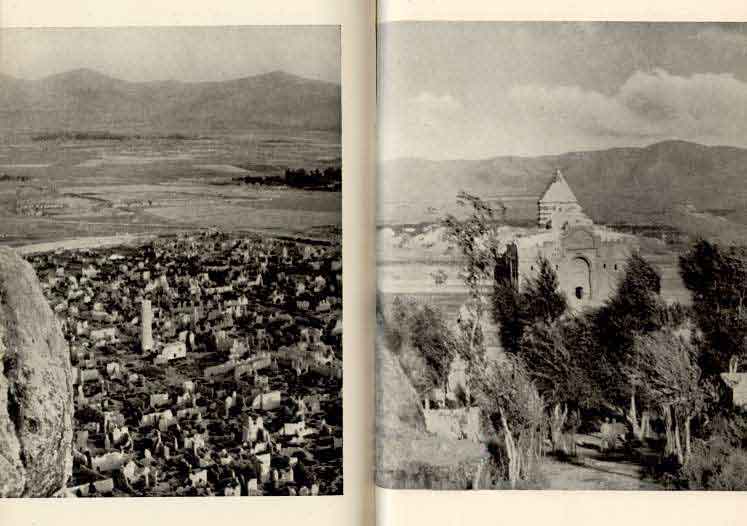
Destruction of Van (1916) - The profaned sanctuary of Deir
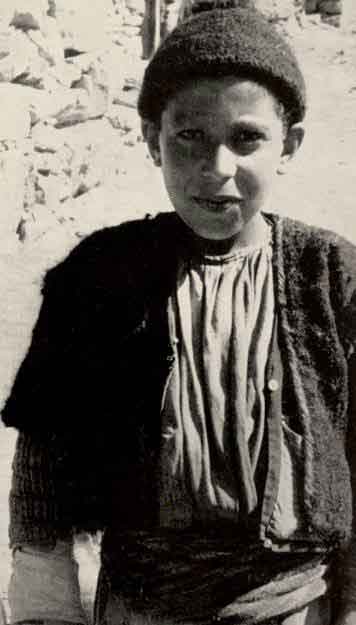
Young scamp-south of the lake
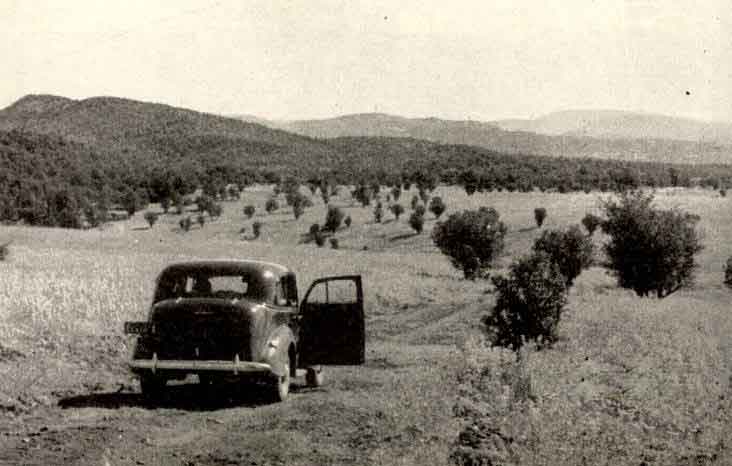
In the bush
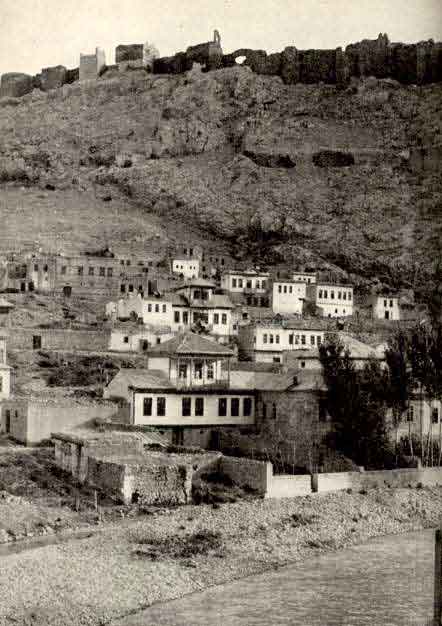
Bayburt
 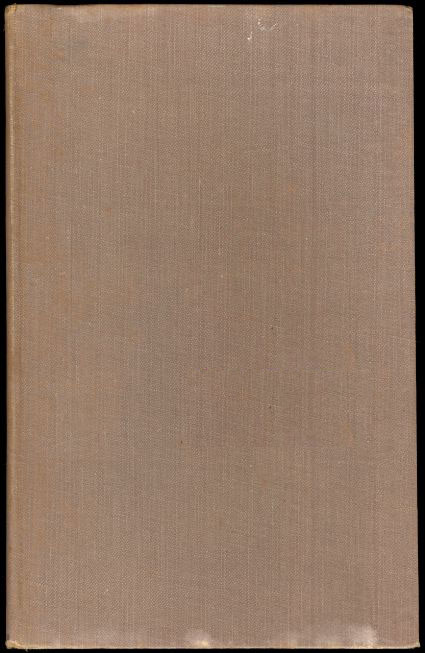 |
Illustrations ...
1. Frontispiece Elazik
2. The Ramparts of Istanbul
3. Islam permeates all Istanbul
4. Our official guide, Setke Bey, is thirsty
5. Mules-the lorries of Istanbul
6. New Ankara
7. Alley on the heights of ankara
8. Turkish Woman
9. Kurdish shepherd-Palu region
10. An awkward spot
11. Old caravaneer, Bitlis
12. Kurdish shearer-Palu region
13. Kurdish women do not wear the veil, but they stick to the shadows
14. A litlle dreamer
15. A handsome face
16. Kurdish big-sister, near Bingöl
17. Buffaloes bathing
18. A sybarite
19. The Kurdish forest-Soulou-Han district
20. In the bush
21. Young scamp-south of the lake
22. The women on the roof-south of the lake
23. Van-Seljuk city on the Gheruab
24. Van-Seljuk watchtower
25. Van-entrance to the fortified city
26. Va-the Seljuk donjon
27. Sealed tomb, near Van
28. Riverside village with its pile of cowdung
29. Vaneykian base of the citadel of Van
30. Harvesting
31. Panoramic view of Koshab Caste
32. Suliman the yellow guarded the pass
33. The Koshab bridge
34. The southern track round the lake, built by the Turks
35. Koshab-Kaleh, Suliman's castle
36. Destruction of Van (1916)
37. The profaned sanctuary of Deir
38. En route to Khanasur
39. An ox
40. Silhouette of the Ala Tagh
41. Bayburt
:::::::o:::::::
ABOUT THE AUTHOR:
François Balsan
Les Surprises du Kurdistan
Prix Gallois 1945
de la Société de Géographie
2ème édition augmentée
50 photos de l'auteur
Collection : Voyage et aventure
éd. J. Susse, Paris
13 rue de Grenelle Paris -7èm
Dans son récit Les Surprises du Kurdistan (éd. Susse, Paris, 1945,
Collection : Voyage et aventure), François Balsan, un négociant
en laine, voyage au Kurdistan, en Turquie, juste avant le déclenchement
de la Seconde Guerre mondiale. Très admirateur du régime, de la
nouvelle Turquie, aucune sympathique pour les Arméniens, "chrétiens
hérétiques" et qui l'ont cherché, leur génocide,
donc un livre peu suspect de turcophobie.
Il note cependant cette rage turque envers tout ce qui reste du passé arménien, la destruction des églises, des monastères, de toutes traces du peuplement arménien, en parallèle des thèses de la société pseudo-scientifique lancée par Atatürk, essayant pathétiquement de prouver que les Turcs descendent des Hittites (était-ce avant qu'on ne déchiffre le hittite, langue indo-européenne, et donc, comiquement, plus proche des langues arméniennes et kurdes ?)
Exterminer un peuple, puis nier ce massacre en niant l'existence des massacrés, et voilà la spirale infernale, finir par enlever toutes traces de la victime, en ôtant la présence historique de ce peuple sur le lieu des tueries.
Pour finir, quelques années plus tard, même attitude envers les Kurdes : il n'y a pas de Kurdes. Il n'y en a jamais eu. Il faut comprendre cette dénégation schizoïde par le fantôme du cadavre qui se cache derrière la victoire toute fraîche. Admettre qu'il a des Kurdes aurait été admettre qu'il n'y a pas eu, depuis toujours, que des Turcs en Anatolie, et donc avant les Kurdes, à Van, à Mus, à Bitlis, à Kars les Arméniens, et que s'il n'y sont plus aujourd'hui, c'est qu'il y a bien une raison inavouable à cela.
Ouroboros : pour nier un génocide on va jusqu'à en amorcer un deuxième, que l'on va nier aussi, plus tard ; et alors, pour cela, etc."
http://sohrawardi.blogspot.com/2005_05_01_archive.html (Site kurde)
